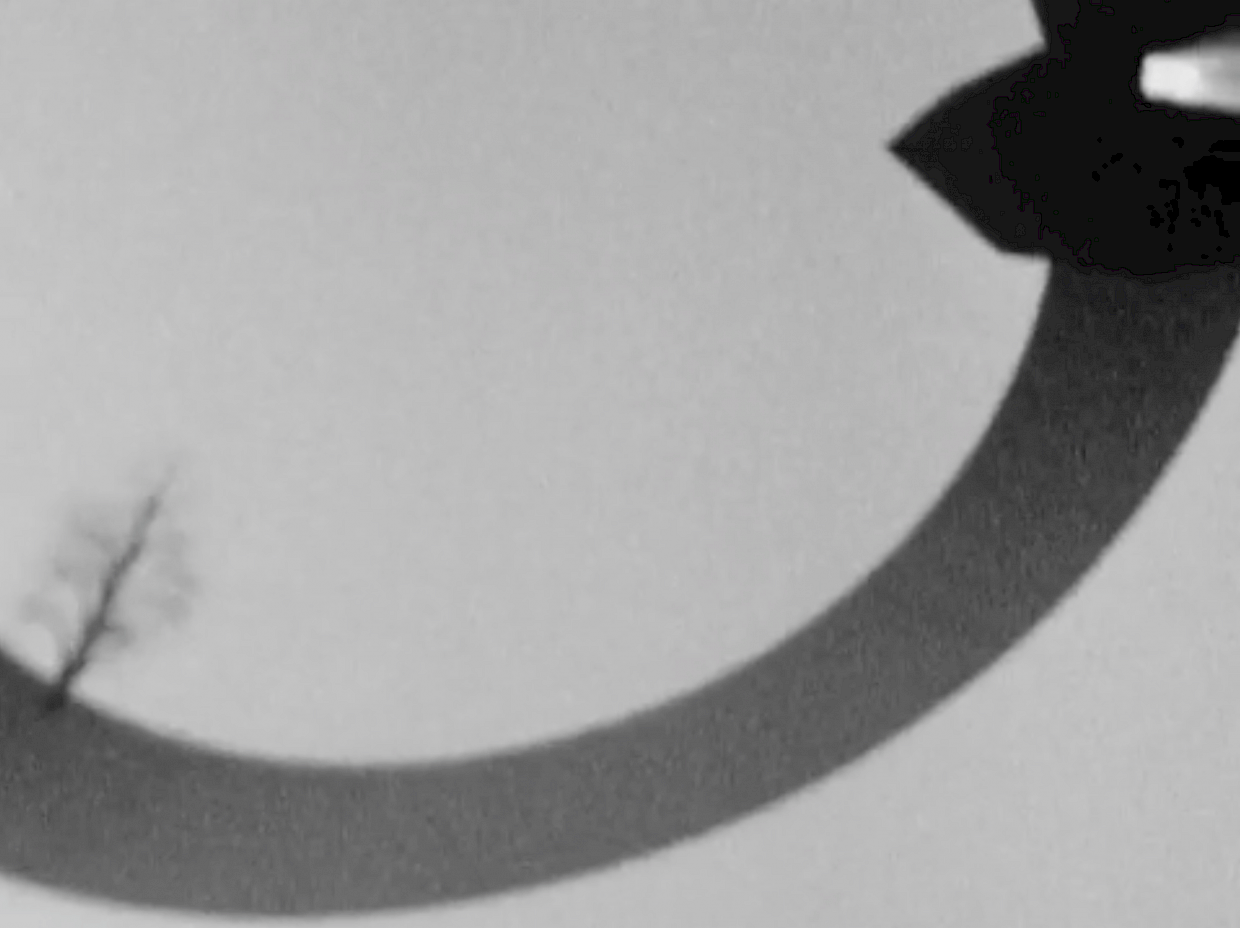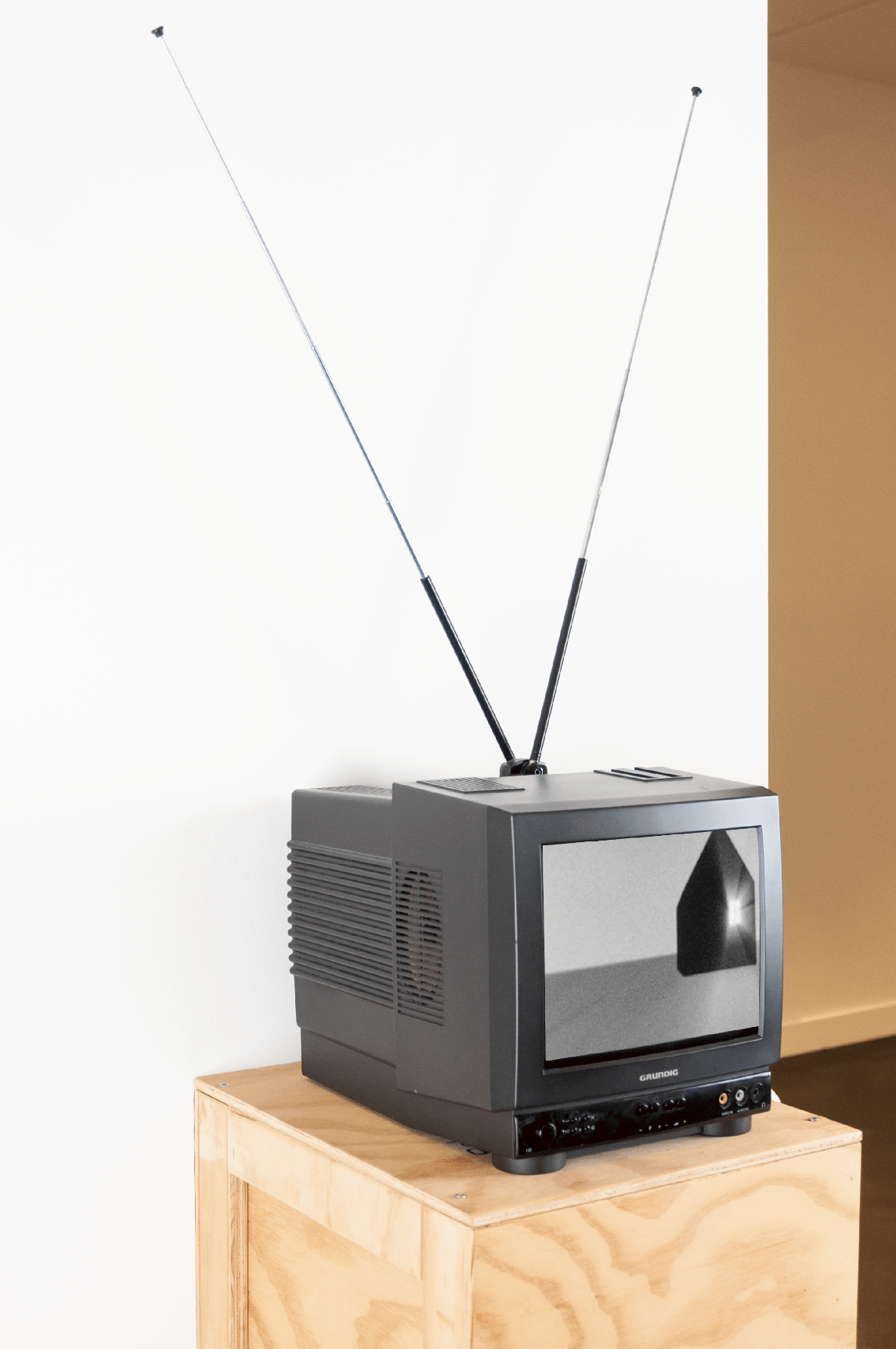

Rebecca Digne (b. 1982)
Datcha

After watching the black and white film by French artist Rebecca Digne, most viewers will be left with questions about the meaning and purpose of Datcha. Digne herself does not comment on the film and simply refers to her work as “moving paintings”.
Datcha opens with the image of a desolate landscape. There’s nothing but a sole, bare tree on the horizon. The viewer then descends from the trunk of the tree towards the ground. For a few seconds, the landscape is completely deserted until you arrive at a simple dwelling with the lights on. Shortly after, the soil around the house starts to curl like a wave in the surf. Then suddenly, there’s a rupture in the film (like an edit gone wrong) and before you know it, the house is turned upside down. The Datcha then seems to be cut loose and falls down, its gabled roof stuck in the ground. The shining light immediately escapes the building, as if it were a ghost, and stumbles into the great nothingness above. The film then plays all over again from the start. This simple script was apparently convincing enough for the Centre Pompidou in Paris, as they acquired the film in 2008.
Even after repeated viewing, the video remains fascinating. This is largely due to the simple but subtle aesthetics, where the objects have been reduced to their essence. The total absence of both colour and sound as well as the constant speed and the continuous repetition, all contribute to the melancholy. This is further enhanced by the old school television screen which forms an essential part of the work. Digne put all the parts of the film together herself and edited the work as if it were an animation video, photo by photo. She then recorded everything on a Super 8-camera.
The title of the video, Datcha (a Russian country house), suggests that it was inspired by the former Soviet Union. The imagery evokes memories of Russian constructivist art at the beginning of the 20th century. Whoever is familiar with Soviet cinema will be reminded of the meditative slowness that also characterises the often-dubbed “inaccessible” films by the famous filmmaker Andrei Tarkovsky. More specifically, his 1983 film Nostalghia, which in short is about a homesick Russian poet living abroad, features a black and white scene where the sun comes up above a house remarkably similar to the building you see in Datcha. It is unclear whether Digne in some way pays tribute to a school of art or filmmaker or whether it’s simply a film featuring visuals that strongly reflect already existing images. The artist never said a word about this and really, it’s not hard to appreciate the film without knowing the answer to this question.
